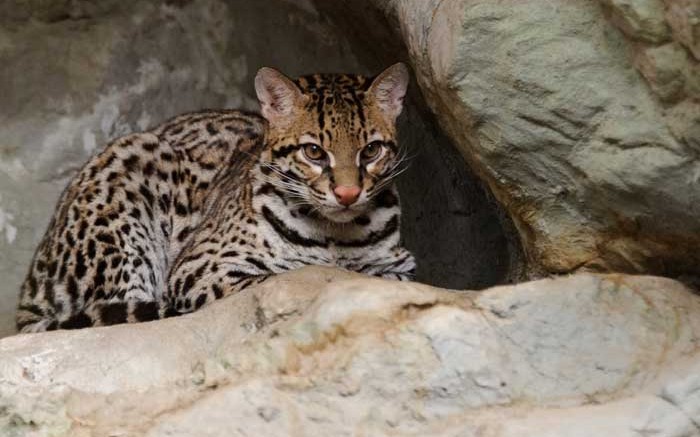A recent sighting of an ocelot wildcat near Augusta Resource’s (TSX: AZC; NYSE-MKT: AZC) Rosemont copper project near Tucson, Ariz., has triggered U.S. environmental authorities to believe further consultation is needed before the company can receive its record of decision (ROD), one of the two major permits remaining before it can start construction.
On May 22, Augusta reported that the U.S. Fish and Wildlife Service (USFWS) sent a letter to the U.S. Forest Service (USFS) listing the reasons it should restart the consultation on Augusta’s flagship project, which included the ocelot spotting.
A remote camera operated by the University of Arizona recently photographed a lone male ocelot in the Santa Rita Mountains near the Rosemont project, Laurentian Bank analyst Chris Chang writes in a note. He says that the USFWS assumes the possible presence of ocelots, and would restart consultation if any ocelots are sighted.
Chang says the agency suggested that more work is also required on the effects of groundwater drawdown on aquatic and riparian species near the project, and has identified the northern Mexican garter snake and yellow-billed cuckoo as species that may be impacted by Rosemont.
On May 23 the USFS requested that USFWS re-initiate its environmental analysis on Rosemont.
Augusta believes it would receive the ROD in the third quarter of 2014 instead of in the second quarter, marking another delay in its permitting efforts, which started in 2007.
The time frame for consultation under the Endangered Species Act is 135 days. But given that consultation and much of the analysis has already been completed in the current biological opinion, Augusta reckons the process could end sooner.
“Although this delay is unfortunate, we recognize the need to have a robust and comprehensive decision document that includes all the required analysis. Further, the USFS has committed to dedicating the appropriate resources to this analysis and ensure that the work is done expeditiously,” the company’s CEO Gil Clausen said in a statement.
The USFS, which prepared Rosemont’s final environmental impact statement, said it would publish a definitive ROD schedule by June.
“We remain confident in Rosemont’s ability to be permitted, as the USFWS only appears to be requesting additional time to advance further studies, as the agency did not make any comments suggesting a fatal flaw in the Rosemont design,” Chang wrote.
The company also noted Red Kite has waived the conditions to draw down US$6 million of its third tranche — totalling US$7.5 million — which previously required the project to have the ROD, among other things. Augusta can now access US$6 million on June 2, 2014, while the rest of the tranche will need to meet the original conditions.
Chang views Red Kite’s waiver as a positive, but says the company’s shareholders could become “increasingly frustrated” while waiting for the project to be permitted, which could increase the chances that they will tender their shares to Hudbay Minerals’ (TSX: HBM; NYSE: HBM) $3.35-per-share hostile takeover offer.
The other major permit outstanding comes under the Clean Water Act, Section 404.
Chang has a “speculative buy” and a $4.50 target price on the stock.
At press time Augusta shares traded for $2.94 apiece, within a 52-week trading range of 48¢ to $3.64. The firm has 145.5 million shares outstanding and holds a $427.6-million market capitalization.


Be the first to comment on "Wildcat spotting delays Augusta’s permit at Rosemont"